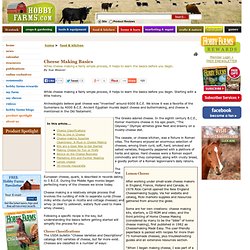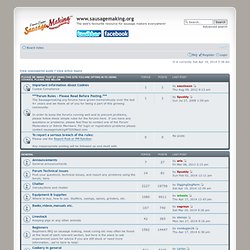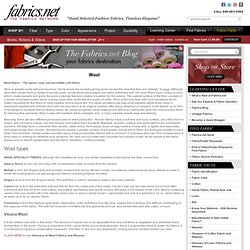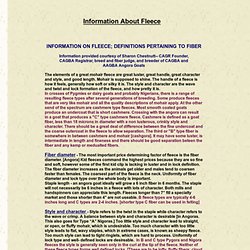

Fankhauser's Cheese Page. Here is an abbreviated (roughly) alphabetized table of recipes on this site.

Note that some are homesteading recipes beyond cheese: Links? News flash: Culinary Institute of America Kids website features Fankhauser's Neufchatel recipe here. Here is a new page for beginning cheese makers which lists a series of cheese making projects starting with the simplest to the more challenging. If you are new to cheese making, and wish to try this rewarding cottage craft, go to Beginning Cheese Making.
I have been making cheese since the early 1970s when my wife, Jill and I began "homesteading" on a little farm in SW Ohio. Here are recipes for cheese and other fermented food products, and milk-related information pages, all alphabetical except for the first and newest additions. Cheesemaking - Online Store. Cheese Making, Home Cheese Making Supplies at The Grape and Granary. Moorlands Cheesemakers - Suppliers of Farm and Household Dairy Equipment - Cheesemaking kits, supplies & accessories. Cheese Making for Beginners. Cheese Making Basics. While cheese making a fairly simple process, it helps to learn the basics before you begin.

Starting with a little history. Archeologists believe goat cheese was “invented” around 6000 B.C.E. We know it was a favorite of the Sumerians by 4000 B.C.E. Ancient Egyptian murals depict cheese and buttermaking, and cheese is mentioned in the Old Testament. The Greeks adored cheese. The caseale, or cheese kitchen, was a fixture in Roman villas. The first European cheese, quark, is described in records dating to 3 B.C.E. Cheese making is a relatively simple process that involves the curdling of milk to separate curds (those milky white clumps in ricotta and cottage cheeses) and whey (a clear to yellowish, watery fluid used to make whey cheese).
Following a specific recipe is the key, but understanding the basics before getting started will simplify the process for you. Industrial weighing scales, scale calibration service, laboratory balances scales, avery weightronix, balance servicing, weigh labeling. Orchard Valley Dairy Supplies. Www.sausagemaking.org. It is currently Sat Apr 19, 2014 3:38 am View unanswered posts • View active topics Important Information About Cookies Cookie Compliance 1 Topics 1 Posts Last post by saucisson Thu Aug 09, 2012 9:13 am ***Forum Rules - Please Read Before Posting.*** The Sausagemaking.org forums have grown tremendously over the last 4+ years and we thank all of you for being a part of this growing community.In order to keep the forums running well and to prevent problems, please follow these simple rules for the forums here.

If you have any questions or problems, please feel free to contact one of the Forum Moderators or Admin Members. For login or registration problems please contact sausagemakingATSIGNaol.com 1 Topics 1 Posts Last post by Spuddy Sun Jul 27, 2008 1:59 pm To report a serious breach of the rules: Please use the Report Post or PM function. Any inappropriate posting will be followed up and dealt with. 0 Topics 0 Posts No posts Who is online Statistics. Dairy UK - The united voice of the dairy industry - Home. Wool: The warm, cozy and incredibly soft fabric Fabrics.net. Wool Wool fabric – The warm, cozy and incredibly soft fabric.

Wool is actually quite soft and luxurious. Some wools are scratchy giving some people the idea that they are “allergic” to wool. Although wool fiber comes from a variety of animal coats, not all wools are scratchy but rather extremely soft. The wool fibers have crimps or curls which create pockets and gives the wool a spongy feel and creates insulation for the wearer. Basically, there are two different processes used in wool production. Wool types WOOL SPECIALTY FIBERS, although still classified as wool, are further classified by the animal the fiber comes from. FleeceInfo. Information provided courtesy of Sharon Chestnutt-- CAGR Founder, CAGBA Registrar, breed and fiber judge, and breeder of CAGBA and AAGBA Angora Goats The elements of a great mohair fleece are great luster, great handle, great character and style, and good length.

Mohair is supposed to shine. The handle of a fleece is how it feels, generally how soft or silky it is. In crosses of Pygmies or dairy goats and probably Nigerians, there is a range of resulting fleece types after several generations of breeding. Fiber diameter - The most important price determining factor of fleece is the fiber diameter. Staple length - an angora goat ideally will grow a 6 inch fiber in 6 months. Style and character - Style refers to the twist in the staple while character refers to the wave or crimp. Luster - Mohair should shine. Handle - Mohair should feel silky and the younger fleeces feel soft, as these are qualities handspinners prize. Exploring the animals, art, and culture of natural fibers. Ruminations, Nigerian Dwarf Goat. Fankhauser's Cheese Page. Here is an abbreviated (roughly) alphabetized table of recipes on this site.
Note that some are homesteading recipes beyond cheese: Links? News flash: Culinary Institute of America Kids website features Fankhauser's Neufchatel recipe here. Here is a new page for beginning cheese makers which lists a series of cheese making projects starting with the simplest to the more challenging.